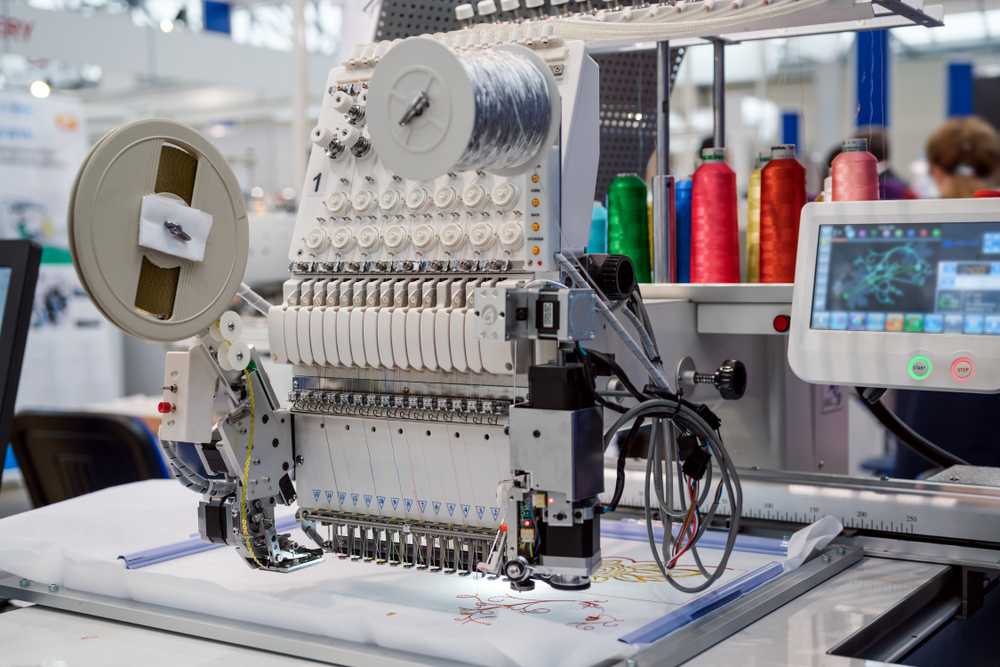High-Quality Digitizing for Embroidery: Professional Workmanship
High-Quality Digitizing for Embroidery: Professional Workmanship
Blog Article
Streamlining the Art of Embroidery Digitizing: Step-by-Step Guide
Embroidery digitizing is a precise craft that demands accuracy and creative thinking. As innovation continues to advance, the digitization process has become extra accessible, allowing lovers to bring their intricate designs to life effortlessly. In this guide, we will unravel the intricacies of embroidery digitizing, damaging down each step systematically to improve the procedure and equip both beginners and skilled embroiderers alike. Remain tuned to uncover how you can streamline this elaborate art form and change your innovative visions right into magnificently embroidered work of arts.
Comprehending Embroidery Digitizing Software Program
Needlework digitizing software works as an essential device for changing intricate designs into electronic layouts suitable with embroidery equipments, helping with precise sewing and personalization. This customized software program allows customers to import various photo data formats, such as JPG or PNG, and convert them right into embroidery machine-readable formats like DST, EXP, or PES - Digitizing for Embroidery. By utilizing functions like stitch editing, underlay choices, and thread shade selection, digitizing software makes it possible for customers to regulate every facet of the layout process
Additionally, advanced embroidery digitizing software application supplies tools for creating complex layouts, adjusting stitch density, and integrating detailed details. Individuals can likewise sneak peek the design prior to stitching it out, ensuring accuracy and lessening mistakes. In addition, many software programs supply automated features that help simplify the digitizing procedure, saving effort and time.
Comprehending the capacities of needlework digitizing software application is important for accomplishing top notch cause needlework jobs. By grasping this device, embroidery fanatics and experts can unleash their creative thinking and bring intricate designs to life with precision and effectiveness.

Picking the Right Style File
After acquainting yourself with the capabilities of needlework digitizing software application, the next essential action in the process is selecting the best design apply for your project. Digitizing for Embroidery. When choosing a layout declare needlework digitizing, it's necessary to take into consideration the complexity of the layout, the dimension of the end product, and the type of fabric you will certainly be dealing with
For complex designs with fine information, a high-resolution picture or vector data is advised to make certain that the needlework maker can accurately duplicate the style. Furthermore, the dimension of the end product plays a substantial role in selecting the appropriate design file. Bigger styles might need greater resolution data to preserve clearness and sharpness.
Furthermore, the kind of material you will certainly be stitching on influences the choice of style documents. Various fabrics may require modifications in the layout documents to ensure that the stitches are effectively straightened and the style appears as meant. By carefully selecting the best layout file based on these elements, you can establish on your own up for an effective needlework digitizing procedure.
Digitizing Tools and Techniques
Using specialized software and accuracy methods, digitizing devices are important in transforming intricate layouts right into embroidery-ready documents. Needlework digitizing software, such as Wilcom, Hatch, or Embrilliance, gives the necessary platform to transform art work right into that site stitch data. These programs supply attributes like stitch editing and enhancing, rug options, and text devices to make sure the layout converts seamlessly onto textile.
One of the vital strategies in digitizing is developing a clear course for the needlework equipment to adhere to. This entails digitizing each aspect of the style with precision, identifying stitch types, densities, and directions. By using tools like digitizing tablets or software-specific plugins, embroiderers can achieve a high level of accuracy in their digitized designs.
Additionally, grasping the art of rug stitching is essential for producing quality embroidery. Underlay stitching stabilizes the fabric and creates a structure for the layout, making sure that the last item is both aesthetically attractive and lasting. By comprehending these digitizing tools and techniques, embroiderers can boost their craft and bring detailed styles to life with precision and performance.
Personalizing Stitch Types and Instructions
The choice of stitch kinds can considerably impact the total look and texture of the stitched design. By purposefully integrating these stitch types, embroiderers can achieve depth and dimension in their designs.
In addition, the direction of stitches plays a critical role in improving the visual charm of the last embroidery. Diverse stitch instructions can include texture, highlight details elements, and develop aesthetic interest. Altering the angle of stitches can replicate activity or natural patterns like hair or plumes. By trying out different stitch angles and patterns, embroiderers can bring their styles to life with remarkable detail and complexity. Grasping the art of customizing stitch types and directions equips embroiderers to unleash their imagination and boost the quality of their work.
Testing and Refining Your Digitized Layout
To ensure the precision and top quality of your digitized layout, comprehensive testing click this and refinement are vital action in the embroidery digitizing process. Once you have finished the digitization of your layout, it is critical to examine it prior to waging the actual embroidery. Evaluating allows you to identify any kind of go right here prospective problems such as thread breaks, sew density troubles, or layout distortions that might influence the result.

After screening, it is necessary to fine-tune your digitized design based upon the responses from the test sew-out. This may involve tweaking stitch settings, readjusting densities, or making changes to the total style to achieve the wanted result. By iterating via screening and refinement, you can adjust your digitized layout to excellence before moving ahead with the actual needlework procedure.
Conclusion
Finally, understanding the art of embroidery digitizing calls for a comprehensive understanding of the software, picking the best design file, utilizing digitizing devices and techniques, personalizing stitch types and instructions, and testing and fine-tuning the digitized design. By adhering to these steps, embroiderers can streamline the digitizing process and develop top notch embroidered styles with accuracy and efficiency.
Report this page